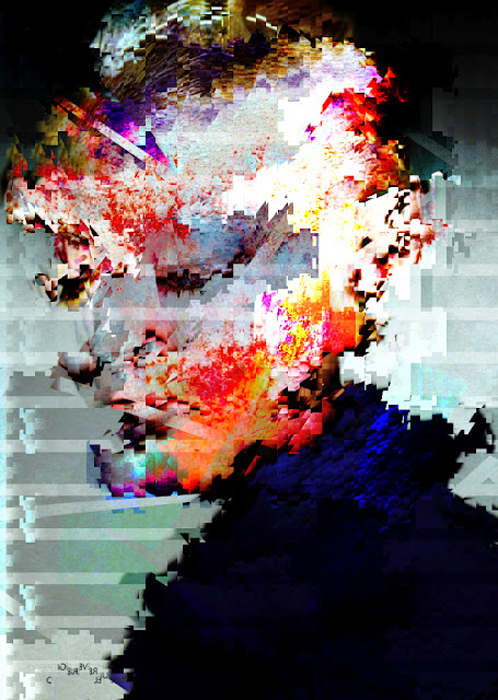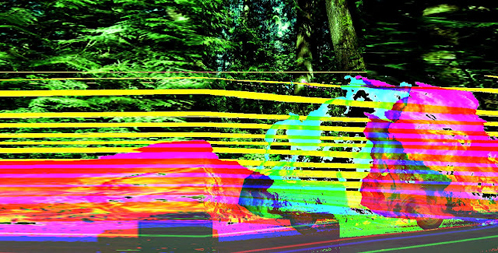Jack Addis is a twenty-three year old artist from Oxford, UK. Following a two-year course studying photography at Abingdon College of Art, he obtained his BA in Fine Art Painting at Bath Spa School of Art and Design. He is currently living and working in Bristol. His work is created through a variety of datamoshing and forced glitch techniques. Addis distorts the images through layers of systematic transformation. His work comments on the ever expanding nature our global digital infrastructure.

How do you describe this work?
I would class myself as a digital image-maker; the work is a mixture of photo manipulation, collage, and image glitching. Building shapes, colour fields as you would with other media.

How long have you been working in this format?
I’ve been working with computers since the last year of my BA; it was actually quite a freeing experience in how immediate the results are without the kind of issues like drying times, it felt a lot more honest to be using a computer. I started working with film at first and by chance discovered breaks and glitches with the video files, and then moved on to working with images.
What are these images really about?
They are about identity and information and how we react to our environment in our current socio-political situation. We are living in cultures of machine-inspired perfection against the backdrop of inequality that also pervades into our lives. We are so connected to the world but at the same time just a distant as we ever were.
In previous interviews you described you work as a “blatant lack of control,” does this process further discuss the lack of control in our culture as a result of our mass media machine?
Yes, in a way, it shows how you can be affected by looking at so much information. We form our lives around ever more complex structures. I think there is a certain anxiety about losing them. With the work, you are losing all the perfect images you are used to seeing, the image is breaking, creating a byproduct or error. The system is showing something unexpected. Though I want to make a distinction here, the work itself is not formed by chance or a lack of control as the computer will only do what you ask it to do. This creates a tension between how my tools should be used and how I am using them.
In several of your pieces the original photograph is recognizable, how important is the context of the original image?
It is not necessary to understand the original image to appreciate my philosophy. But I think it’s important sometimes to know or be able to see image was once whole or complete to push certain aspects in a piece.
What artists would you attribute to your interest in glitch art?
Coming from a painting background this is where a draw a lot of influences from artists like Basquiat, Bacon and Picasso for their use of colour, shape and line to render figures and environments. Abstract expressionism plays a big part too, the power of colour to affect a mood. Lucian Freud and Jenny Saville for the sculptural way in which they form a body. Its nice I have the whole of art history at my fingertips, if I chose.
One last thing, would you suggest something for us to read?
I would read High Rise by J G Ballard, it’s about how modern life in an urban landscape and advances of technology can cause people to regress socially back their most base tribal instincts.
To see more work, visit his website .
You can also find him on Rise Art






